13 Case Studies on Business Blogging and Long-Term Profitability

One of the biggest pieces of information I try to convey with both my blog and my sales calls is that a blog is a long-term strategy. Paid advertising, sure, that can get you results immediately. What about flashy conferences and sponsorships? Obviously. But blogging? Blogging is slow.
I usually use the snowball analogy. A few flakes of snow don't add up to much, but when there's enough of them, you can roll it up into a snowball, and that snowball just keeps getting bigger. Roll it down a hill and it can – in the right circumstances – become an avalanche.
There are a variety of different strategies used to accomplish this. The Huffington Post, for example, got its start through volume. They published nearly one post per minute when they first started blogging, flooded the market, and becoming a household name overnight. You can compare that to a blizzard that leaves an entire town buried under feet of snow.
Other companies, like many of the big marketing firms you might think of – Moz, Hubspot, etc – got their starts just providing a blog and a service. They spent years working at it, growing a community, building products, offering information, and growing. It's the slow and gradual snowfall that eventually builds up enough to snowball.
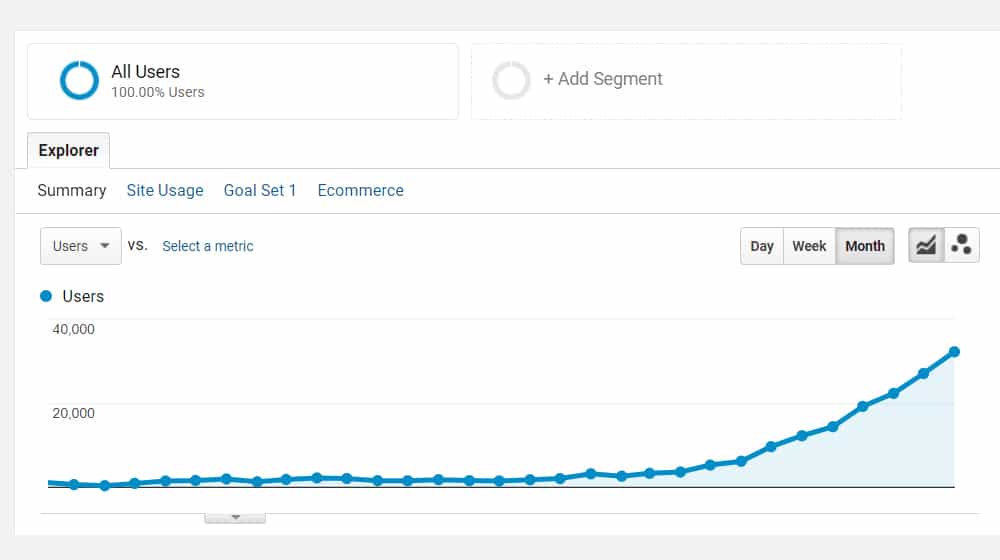
The fact is, most businesses won't see immediate returns from their blogging efforts. Blogging takes time to get established, time to build and grow, and time for people to learn to recognize it. It does help, though, on a long-term scale. You don't have to take my word for it, either; here are a handful of case studies that prove it.
 30 Second Summary
30 Second Summary
You need to be patient when starting a blog since it's a long-term strategy that takes time to show results. Unlike paid ads or events that give quick returns, your blog will grow slowly like a snowball. You can choose between two main approaches: publish content very often like HuffPost did, or focus on high-quality posts at a slower pace like Hubspot. Many case studies show blogs taking 1-3 years to get significant traffic, but the investment pays off with steady growth in visitors and sales.
1. Express Writers
Express Writers is a content mill where you can hire freelancers to create quick articles for your site. They've been in operation for eight years, and over that time have gone from a brand new site to pulling in 90,000 visitors per month. On their blog, they have published nearly 1,200 blog posts over those eight years (roughly 150 per year, or once every 2-3 days). Their focus on quality over quantity – something I promote as well – has helped them surge in traffic. I saw the same thing with some of my sites when I moved from 7 posts per week to 2-3 posts per week.
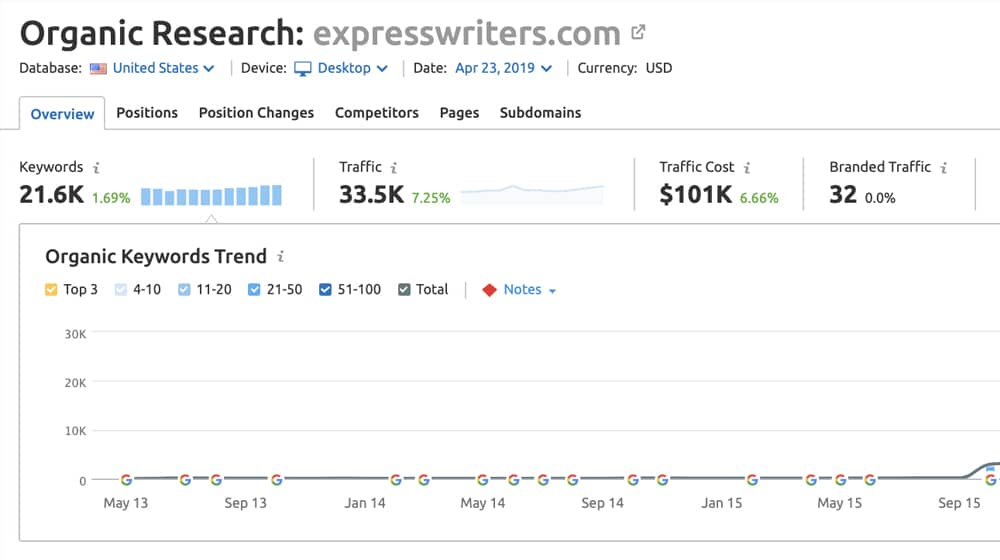
You can see in their charts how their blogging strategy has worked. It's typical of what you'll see throughout these case studies: long-term steady growth. There are a few surges here and there from social media and referral traffic, but for the most part, it's slow and steady winning the race.
2. Tresnic Media
Just because blogging is a long term strategy doesn't mean you can't jump the gun a little bit. Tresnic Media proved this with its surge of content in a strategy similar to the aforementioned HuffPo strategy. They didn't publish a new post every minute, though; they published two new posts per day for five weeks. This totaled up to 50 new blog posts, aimed at creating deep and useful content in their niche.
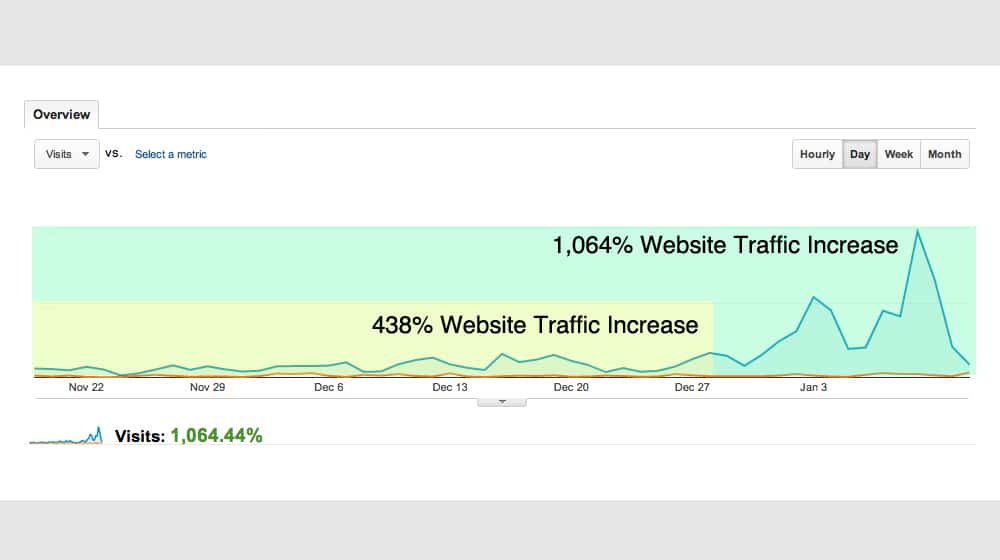
Rather than just posting content, they made sure to share it as well. Facebook and Twitter were the primary targets, with Google+ in there as well, though you can't use that site anymore. During their experimental period, they saw significant growth in search volume, search rankings, and traffic. In fact, in just eight weeks, they increased their web traffic by 1,000% - not bad for only 50 blog articles. Our clients have seen similar numbers.
3. OptinMonster
One of several case studies described on the page linked above, OptinMonster is one of the world's leading landing page and form creator apps. They weren't always so prominent, however. They got there through an extended campaign of creating high-quality content.
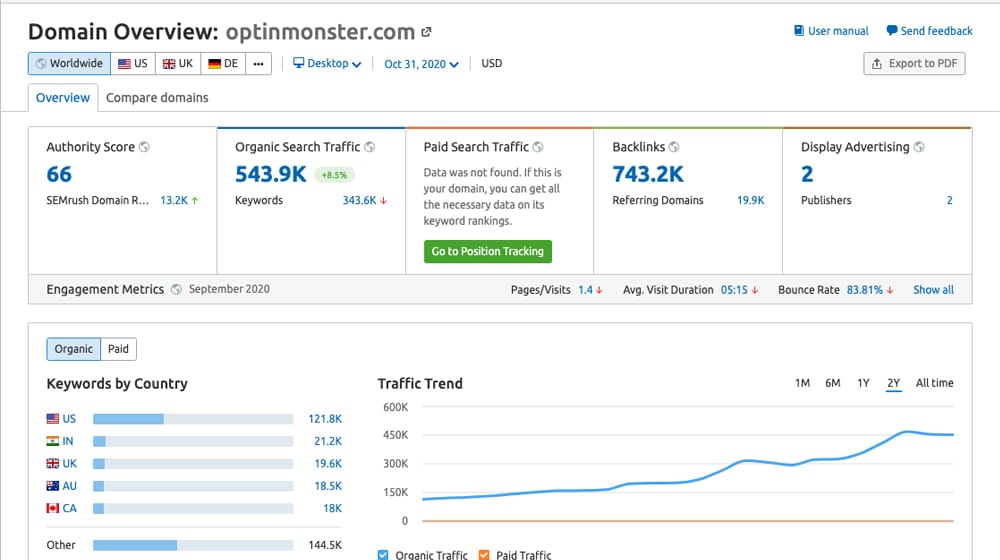
Specifically, what OptinMonster creates is known as pillar posts. Pillar posts are huge, well-written, engaging, and powerful. They take a lot of time to create because they're 10x content; they're extremely deep and actionable in their topics, they're well-proven and full of detailed information, and they're packed with multimedia.
OptinMonster didn't just create pillar posts; they created pillar posts and cross-linked them. That interlinking helped keep people around on the site, and continually proved that the company knows what they're talking about. Altogether, this led to at least 600,000 visitors per month and a position as one of the foremost companies in their space.
4. UnMarketing
UnMarketing is a successful marketing blog that strives to take the traditional knowledge of marketing and turn it on its head. It's an effort and a movement to get away from treating customers as mobile wallets and focus on the relationships and engagement that they represent. They're people, not pocketbooks.
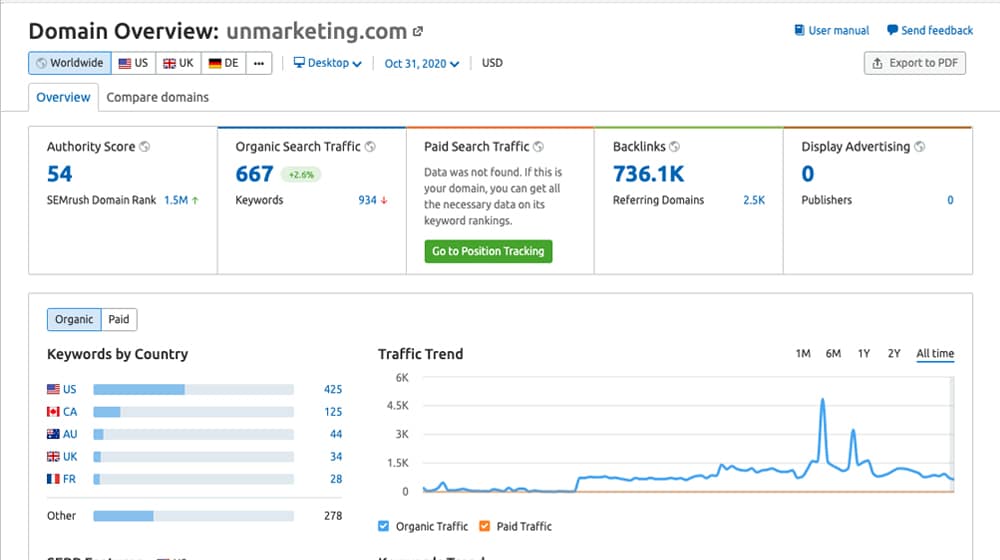
These days, UnMarketing's strategy isn't even that uncommon. Many content marketers today will tell you that the content itself isn't the most important part. The most important part is the relationships you build with your customers. In that way, UnMarketing went from a countercultural movement to the forefront of marketing, simply by being right.
This case study is more about what a blog can do when it's up and running. Long-term, a blog gathers a lot of power, through name recognition, audience and community, and link juice. Scott Stratten, the man in charge of UnMarketing, didn't have a Twitter presence. When he created one, he immediately focused on it as a two-way communication channel for his audience, and people appreciated it. He now has 174,000 followers and regularly uses it to signal boost members of his community while engaging with them personally.
5. Mint
Mint is a personal finance company that was founded in 2006. Personal finance is one of the most crowded and competitive niches online, and they were up against all manner of competition from other small sites and larger businesses like Quicken.
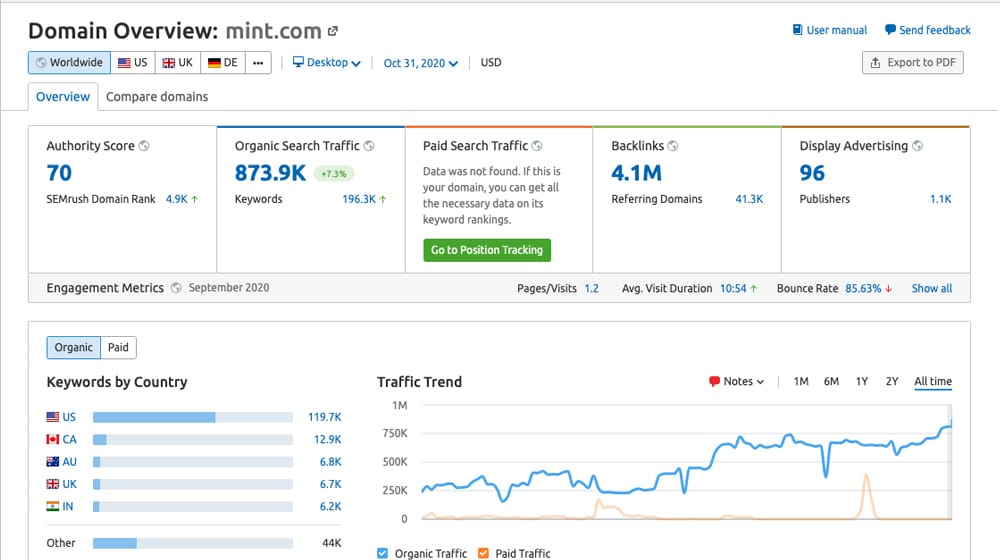
Their route to success was through a variety of different kinds of content, with extremely high editorial standards. Whether it was a news post, a post about tips and tricks, a detailed study, an infographic, or a link roundup, Mint focused on high-quality content above all else.
What this did is allowed them to take a small personal finance blog into the big leagues. Mint made a name for itself, and within a few years – only three, for the founder – it was a great success. The founder sold the site to Intuit for $170 million, based almost solely on the power of the blog.
6. Ahrefs
You all know Ahrefs, the SaaS link analysis company. They're one of the best on the market when it comes to analyzing, recording, and reporting on backlinks. I recommend them as a tool, and so to thousands of others.
Ahrefs went against the grain back in 2015 with a campaign of deleting old blog posts. Now, one thing I often recommend when I analyze a blog that has been running unsuccessfully for years is to delete a lot of their old content. Old content can be of poor quality and can be holding a site back. It's important to know the difference between old content that still has some value and old content that has nothing going for it, and Ahrefs did just that.
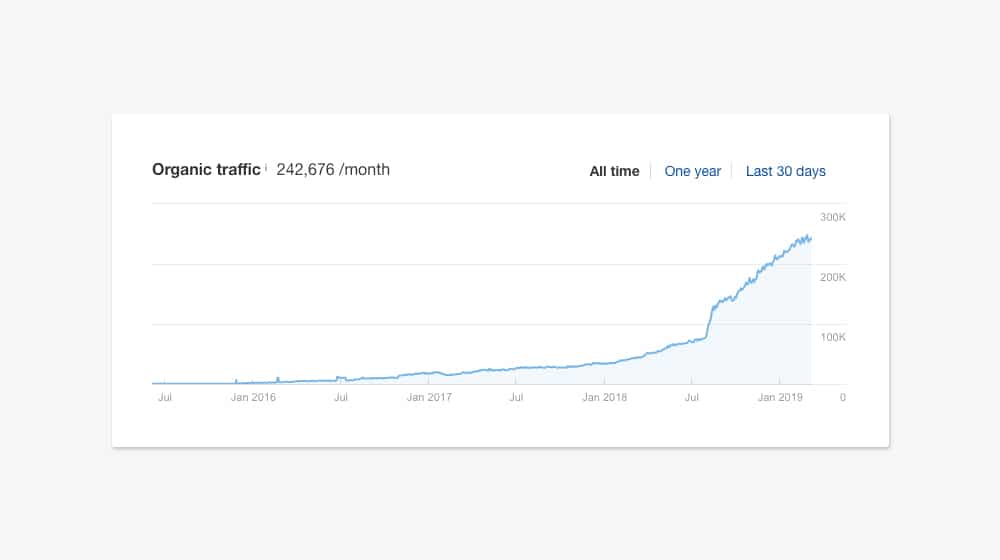
Ahrefs ended up deleting nearly 50% of their blog at the time. They nuked 266 blog posts from their site, all of which averaged about 700 words in length. Obviously, by 2016, a 700-word blog post is nothing. It's borderline thin content.
Combining this strategy with new content production rules moving forward was the key to success. They nuked the old posts, and cut their content production in half, focusing on longer, more valuable posts. You'll recognize those now; they create some of the best posts in the industry on their site these days. The result is what you see before you; one of the best blogs out there.
I wrote an article for The Huffington Post a while back about how I accomplished similar results by deleting old blog posts - while it was anxiety-inducing, my traffic increased by 30% after deleting those posts. Low-quality content can weigh down your site, and this case study is proof of that.
7. Buffer
Buffer is another major name in marketing. Their tool is incredible for content creators looking to keep an ongoing portfolio of references and useful items. They weren't always the big name they are today, though.
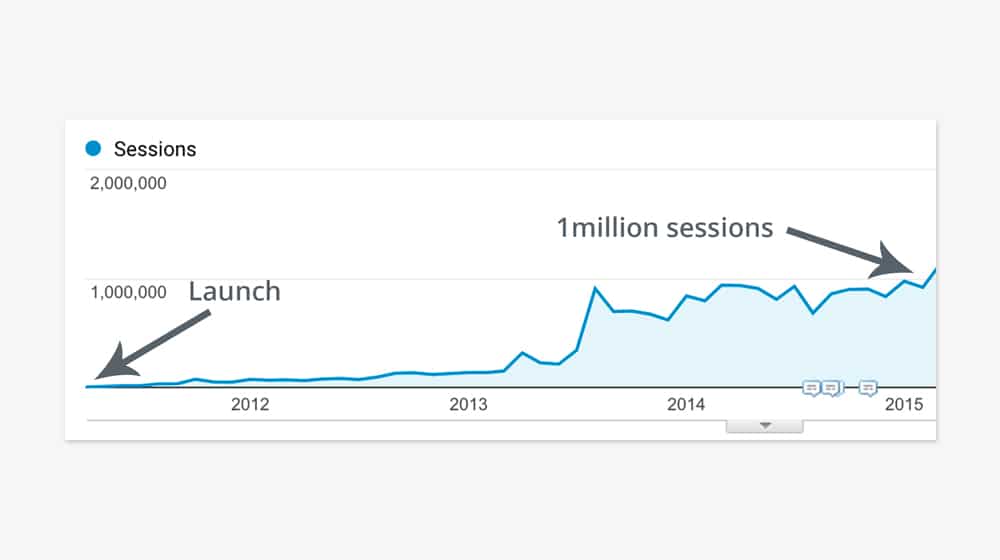
Buffer's launch was anything but spectacular. They took two solid years of blogging before they caught on, which is pretty standard for a purely organic strategy. The important part was simple: they made their content with a focus on what their users wanted to see. As it turned out, commenting on pretty much anything that happened or changed in the social media space was exactly what they needed to do.
Buffer's content strategy has worked, as evidenced by the fact that most of you know or even use Buffer regularly. It took them six years, but they went from a new site with no relevance to 1.5 million monthly sessions. All it took was a focus on producing content that their users really wanted to see.
8. The Renegade Pharmacist
Link building is one of the core processes in SEO, and it's a huge part of what blogging is all about. Blogging attracts users, yes, but it also attracts links from other sites. Those links might come from other blogs, or they might come from major organizations, like Buzzfeed, Yahoo, and The Huffington Post.

The Renegade Pharmacist shows that content can dramatically accelerate link building, even if the traffic that comes with a viral post doesn't linger. They created an infographic – a surprisingly simple one – to show what happens in the body when you drink a can of Coke. This infographic went viral and received over a thousand backlinks – many from high-quality sites – in a matter of days.
Of course, no one can plan to go viral. It's entirely at the mercy of the whims of the global audience the day the post is shared. The key is to consistently produce content that has the potential to go viral and prepare for when something finally does.
9. ClearVoice
ClearVoice is another marketing agency, perhaps less popular than some of the others on this list, but their results are important. What they show is the importance of having a content strategy, rather than just creating content and hoping something works along the way.

Their B2B blog was languishing with a respectable but small 3,000 monthly visitors. They were growing, but that growth was slow. Year over year, they might only add another 500-1,000 new visitors. When other sites in the same niche can pull in hundreds of thousands, that's not a great rate.
Simply shifting from an unfocused, reactive strategy to a proactive, structured strategy helped them skyrocket their visitors. They performed a detailed content audit – which they describe in the post I linked – and shot from 3,000 visitors to 50,000 in a matter of two years. Not bad!
10. Scoro
Scoro was a startup back in 2015 and earlier, averaging a meager 1.5k visitors per month. In a little over a year, they grew to 31k visitors per month, and they did it entirely through content. So what did they do?

The truth is, they didn't have any single strategy. Rather, they progressed through a series of ideas and experiments, some garnered from other sites, some developed on their own. They started creating content bundles, they emphasized technical SEO, and they weren't afraid to abandon ideas that proved they didn't work out.
11. KISSMetrics
Neil Patel is one of the foremost minds in content marketing, and he shows it time and again on his blog and related businesses. KISSMetrics is one such blog, and they experimented with infographics as a marketing tool. Remember up above, with the Coke infographic that raked in 1,000 backlinks? What if you were to do that 47 times?
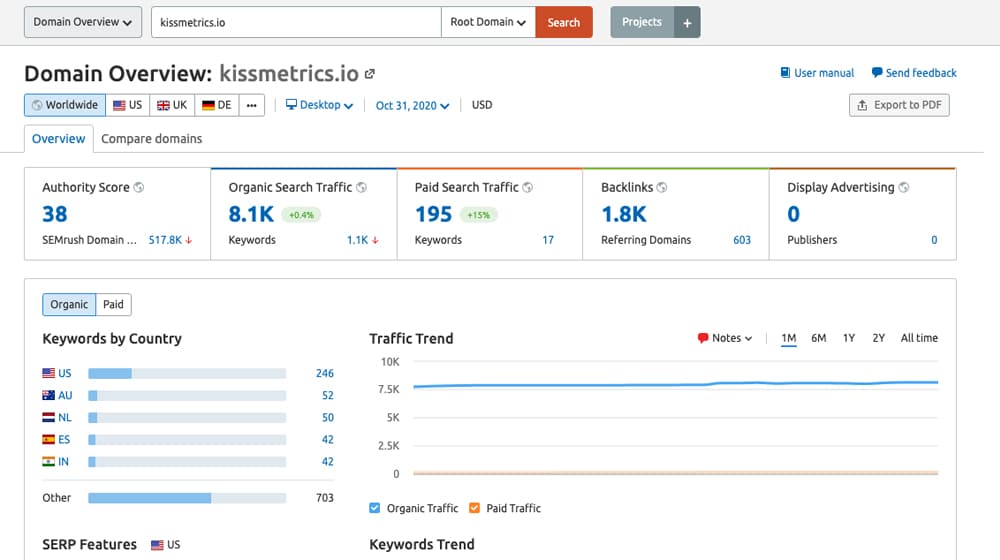
Well, KISSMetrics didn't pull in 47,000 backlinks, only about 4,000. What they did do is pull in over 2.5 million visitors, and settled in at a new high of 100,000 monthly visitors in less than a year. Now, sure, Neil has a lot of name recognition and a lot of resources to throw at any business he chooses to start, so he's working with a head start over other business owners, but nothing he did is impossible to replicate. You can do it too.
12. Backlinko
Backlinko is another excellent top-end site in the SEO and marketing industry. I've personally linked to their site dozens of times by now, and I know I'm not alone. They have a huge array of useful content on their site, and their resources are top-notch.
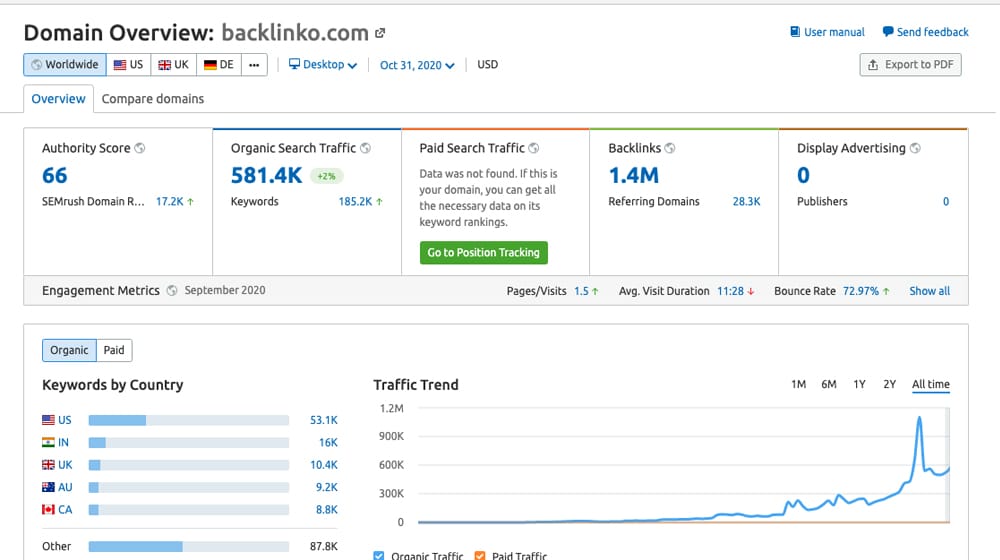
Yet still, they can always improve, and this case study (or rather, series of case studies) proves it. In this case, Brian Dean focused on guest blogging. His goals were two-fold; to prove that guest blogging is still a viable strategy, and to grow his brand by doing it the right way. He did just that, and you can click through to his case study to find out how.
Sometimes results can happen quickly, and sometimes they happen slowly over time. Social Triggers manager to create a strategy they called drafting, after the way professional racers huddle in the wake of one another so they don't have to fight air resistance quite as much. When a competitor creates a piece of content for a major site in their industry, they used a bit of clever finagling to get their content featured as well, as a follow-up. The hard work was done; another company led the way. All they had to do was follow up.
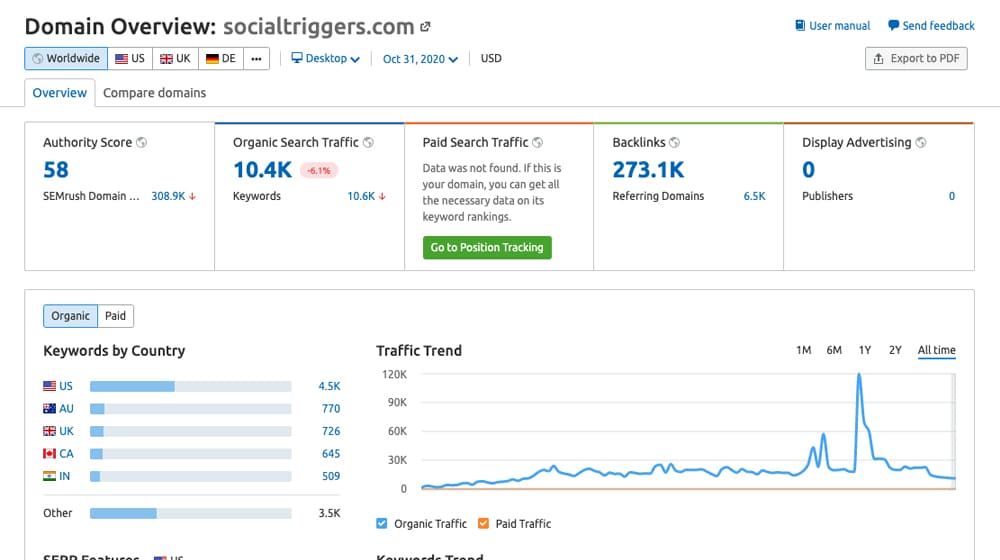
The numbers are small; a blog that went from 20 hits a day to 800 hits per day and used it to pull in $2,000 in revenue. Still, it shows that even small-scale success is more than possible.
What did you think of these case studies? Are you convinced that blogging is a great long-term investment? If you have any questions for me, let me know in the comments section below. I respond to each and every comment and would love to hear from you!



 30 Second Summary
30 Second Summary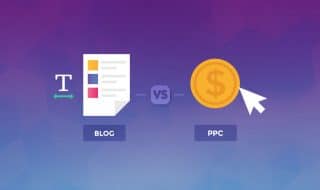



January 14, 2021
Very informative. I want to ask, do you have any ballpark number of how much should I invest? Let’s say if I get an agency to handle my blogs for a year? I want to see if I can maintain that for 2-3 yrs before I have some results. Thanks!
January 14, 2021
Hey Joseph!
I'd imagine any reputable content marketing agency can help you achieve results much sooner than that.
Most of our clients have a 400-600% growth in traffic with us in the first year.
It does depend on the size and authority of your site. Brand new sites will grow at a slower rate, and your 2-3 year estimates may be a bit more accurate.
Your industry, your product, and your competition are all critical factors.
We've done wonders with a ~$2,000 per month budget. To answer your question, that's roughly 48k-72k over 2-3 years.
Feel free to drop me a line if you'd like a more personalized discussion 🙂